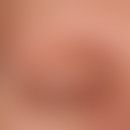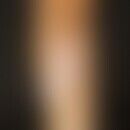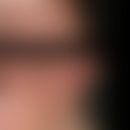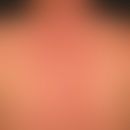HistoryThis section has been translated automatically.
Kaposi 1895
DefinitionThis section has been translated automatically.
Controversial term for a chronic, primarily lymphocytic folliculitis leading to gradual, complete follicular atrophy and alopecia. The term is used synonymously with lichen ruber follicularis by most authors. It is dispensable as far as it goes.
The clinical picture described here as lichen planopilaris characterizes this as atrophying follicular keratinization disorder (keratosis pilaris), which can be subsumed either under "keratosis pilaris decalvans (syn: keratosis follicularis spinulosa decalvans) or under postmenopausal frontal fibrosing alopecia (Gálvez-Canseco A et al 2018).
You might also be interested in
EtiopathogenesisThis section has been translated automatically.
Unknown.
ManifestationThis section has been translated automatically.
Occurring in middle age. f:m = 8:2.
LocalizationThis section has been translated automatically.
Localized at the capillitium, especially in the parietal and frontal region. Rarely occipital involvement.
ClinicThis section has been translated automatically.
Diffusely distributed over a smaller or also larger area, pinhead-sized, follicular, pale to strong red colored, ruff-like erythema arranged around the hair follicle, giving way in the course of months to 0.05 - 0.1 cm large, reddened papules with pointed hyperkeratosis/follicular hyperkeratosis ("pilar casts") with or without central hair.
Older "burned out" areas show atrophic scarring, smooth mirroring (scarring) alopecia without erythema or follicular structures(pseudopelade).
In some of the patients, there is simultaneous evidence of a still present or already burned out keratosis follicularis (atrophicans) on the extensor sides of the upper arms or thighs and/or a ulerythema ophryogenes.
HistologyThis section has been translated automatically.
Interface dermatitis with lymphocytic infiltration of the infundibulum and the isthmus of the follicle
Differential diagnosisThis section has been translated automatically.
External therapyThis section has been translated automatically.
Internal therapyThis section has been translated automatically.
Experimental approaches in smaller studies:
- Application of oral tetracyclines.
- Moderately good clinical results have been described with the use of hydroxychloroquine and oral retinoids.
- There are reports of systemic use of low dose methotrexate or cyclosporine A.
Operative therapieThis section has been translated automatically.
Note(s)This section has been translated automatically.
The term "lichen planopilaris" is used inconsistently. In the Anglo-American language it is used synonymously with"lichen planus follicularis". This classification would provide nomenclatural clarity. In principle, we agree with this opinion. We use the term lichen planopilaris only to reflect its resonance in international literature.
PatientinformationThis section has been translated automatically.
Patient Request:
About a year ago, I gradually lost my eyebrow hair. I suspected a hormonal change due to age (62 years). Now about half a year ago I noticed a strong thinning of the head hair, especially Geheimratsecken and above the ears. The dermatologist took a scalp sample. Findings: Lichen plano pilaris. Now, based on his recommendation, I treat the scalp three times a week with Dermovate scalp application solution. I read on the net that there is hardly any cure for this disease. What else can you advise me? Should I expect total hair loss? I quit my part-time job on the advice of my doctor to eliminate the job stress situation(night watch). Are there any other causes of this disease? Are there any other known symptoms? I am plagued by episodic pain on the side of the instep of the inner foot, above the big toe, especially often at night or when I am resting - they are very unpleasant and strong stabs that do not occur when I am moving. Is there possibly a connection? I have also thought about fibromyalgia? Thank you very much for your answer.
Comment (Prof. Altmeyer): Classic description of a keratosis pilaris syndrome.
Answer from Prof. Dr. med. Stephan Lautenschlager:
Your description of the hair loss fits well to the diagnosis of "Lichen planopilaris". This disease, the cause of which has not yet been clarified, is fortunately harmless and cannot be held responsible for your pain. Unfortunately, however, it can lead to scars in hairy areas, which is why the loss of hair is sometimes irreversible. A therapeutic goal in your case must therefore be to stop the inflammatory process to avoid further deterioration, this can be well tried with Dermovate. If there is no effect, tablets (retinoids, antimalarials or prednisone) can be used.
Lit: article taken on 18.02.9.30 from seniorweb: https://seniorweb.ch/2013/12/31/hair-loss-and-lichen-planopilaris/
LiteratureThis section has been translated automatically.
- Cevasco NC et al. (2007) A case-series of 29 patients with lichen planopilaris: The Ceveland Clinic Foundation experience on evaluation, diagnosis and treatment. J Am Acad Dermatol 57: 47-53
- Chieregato C et al. (2003) Lichen planopilaris: report of 30 cases and review of the literature. Int J Dermatol 42: 342-345
- Gálvez-Canseco A et al. (2018) Lichen planopilaris and frontal fibrosing alopecia cannot be differentiated by histopathology. J Cutan Pathol doi: 10.1111/cup.13112.
- Gupta SN, Palceski D (2003) Lichen planopilaris presenting as truncal alopecia: a case presentation and review of the literature. Cutis 72: 63-66
- Habashi-Daniel A et al.(2014) Absence of catagen/telogen phase and loss of cytokeratin 15 expression in hair follicles in lichen planopilaris. J Am Acad Dermatol 71:969-972
- Lyakhovitsky A et al. (2014) A case series of 46 patients with lichen planopilaris: Demographics, clinical evaluation, and treatment experience. J Dermatolog Treat 1:1-5
- Mirmirani P et al. (2003) Short course of oral cyclosporine in lichen planopilaris. J Am Acad Dermatol 49: 667-671Nutz
MC et al. (2025) Line-field confocal optical coherence tomography in lichen planopilaris and frontal fibrosing alopecia: A pilot study. J Dtsch Dermatol Ges 23:173-181.
Vaisse V et al. (2003) Postmenopausal frontal fibrosing alopecia: 20 cases. Ann Dermatol Venereol 130: 607-610
Incoming links (4)
Frontal fibrosing alopecia; Lichen planus atrophicans; Lichen planus follicularis; Lichen planus follicularis capillitii;Outgoing links (8)
Frontal fibrosing alopecia; Hair transplantation; Keratosis follicularis spinulosa decalvans; Keratosis pilaris; Keratosis pilaris; Lichen planus follicularis; Pseudopélade; Ulerythema ophryogenes;Disclaimer
Please ask your physician for a reliable diagnosis. This website is only meant as a reference.








